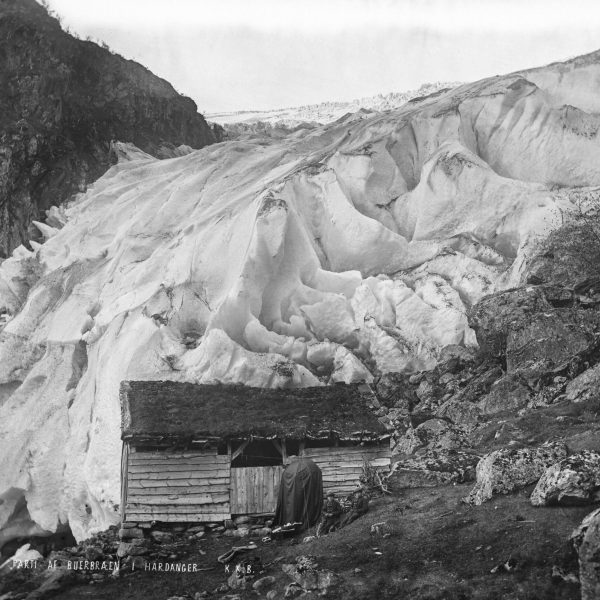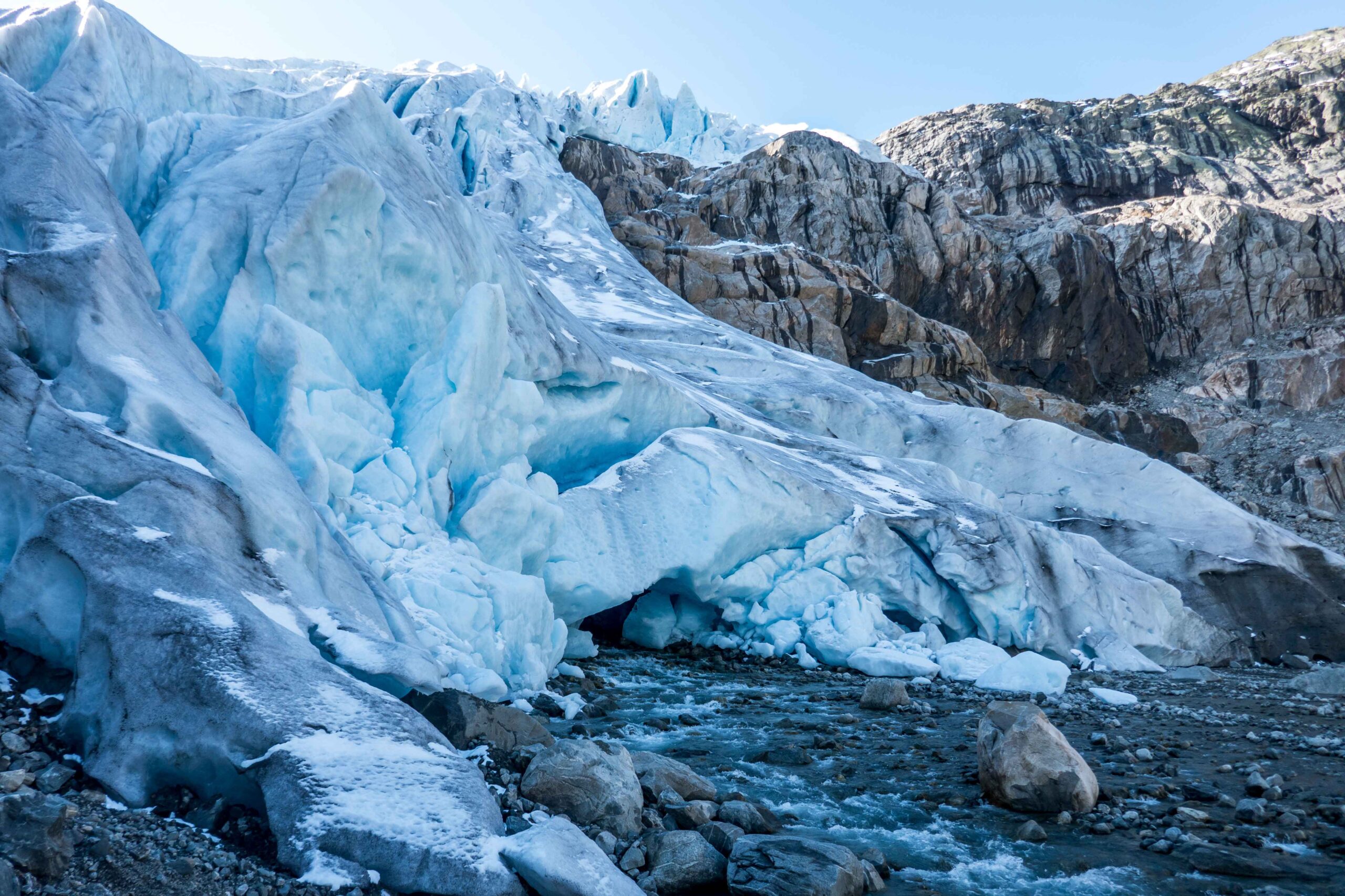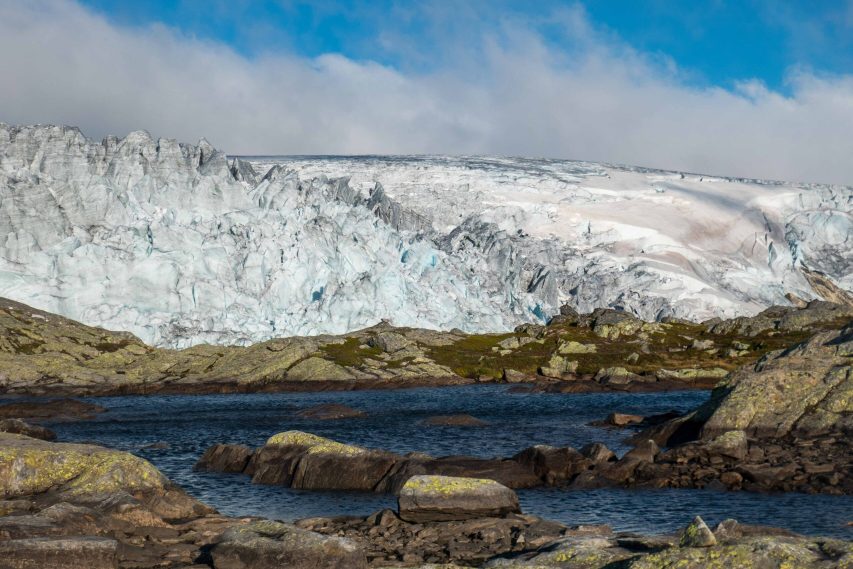Buerbreen (also: Buarbreen) is a popular outlet glacier on the eastern side of Folgefonna, Norway’s third lagers ice cap. The first glacier pictures in Norway were shot here.
Buerbreen steeply descents to the east and actually comprises of two glaciers: the northern branch is called Øvre (Upper) Buerbreen, the southern branch Nedre (Lower) Buerbreen. Especially Nedre Buerbreen is a big tourist attraction, as it is only a short drive from the nearby town of Odda. 150 years ago people were already drawn to Buerbreen, such as local photographer Knud Knudsen.

Knud Knudsen (1832-1935) was a Norwegian photographer, born in the nearby town of Odda. He started making photo’s as early as the 1860’s, making him one of the pioneers in Norwegian photography. He was just in time to capture Buerbreen at its maximum extent in thousands of years. Advancing glaciers must have fascinated him, because Knudsen returned to Buerbreen (and other glaciers) multiple times. Again and again he carried his cumbersome equipment into the valley of Buer. Surely it wasn’t a boring walk, with magnificent views on the glacier.


Buerbreen from Jordal by Knud Knudsen (left, National Library of Norway) and in 2021.

Knudsen beautifully captured the advancing glacier. His first picture dates from 1864, when Buerbreen was receding since a few years. But it wasn’t long before the glacier started to advance again. This is clearly visible on Knudsen’s pictures, as an advancing glacier differs greatly from a receding one: the snout is much steeper, as well as the sides. Both are also full of crevasses. Around 1878 Buerbreen reached its maximum extent, sustaining it till about 1892 (Nussbaumer et al., 2011). Afterwards the glaciers receded only slowly and by 1933 Buerbreen was only tens of meters shorter than it was in 1892. Then, a rapid retreat started.
Since Knudsen’s days the Buer valley has become much better accessible. Nowadays a road goes all the way to the farmstead of Buer, shortening the walk to the Buerbreen to only three kilometers. Although the glacier had receded considerably, the two ice falls feeding Nedre Buerbreen are unabatedly impressive. Those who dare to leave the marked trail can also come up close with Øvre Buerbreen. Though smaller than its lower sibling, its blue colors are much more vivid.
Buerbreen has one of the longest records of length change measurements in Norway. People started to monitor the glacier in 1900, but could never have expected the upcoming changes. From 1933 onwards the glacier lost a kilometer in under thirty years. After this rapid retreat the glacier was in balance for a few decades and grew by two hundred meters in the 1990’s. From the turn of the century Buerbreen is losing 25 meters per year on average.



For a bird’s-eye view, both the ridge in between Nedre and Ovre Buerbreen and the mountain of Reinanuten (1296) to the south can be climbed. At the top of Reinanuten you are at eye level with the upper part of Buerbreen’s icefall. Its snout is slowly melting away at the foot of the four hundred meter high vertical rock face of Reinanuten. Eventually Buar valley will become ice-free.
Search within glacierchange: